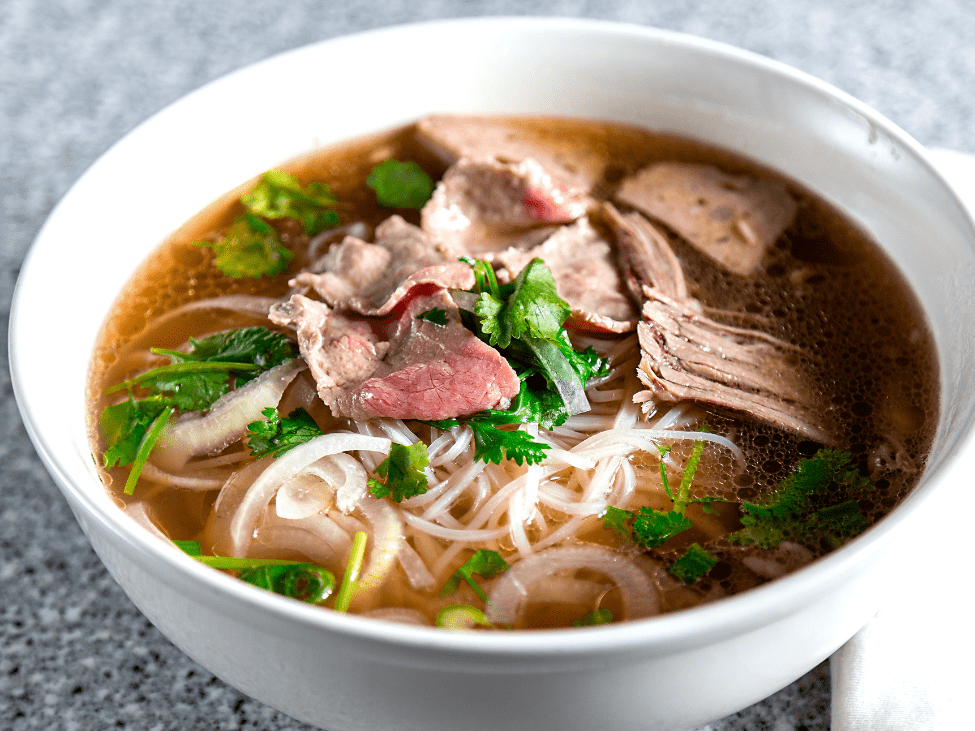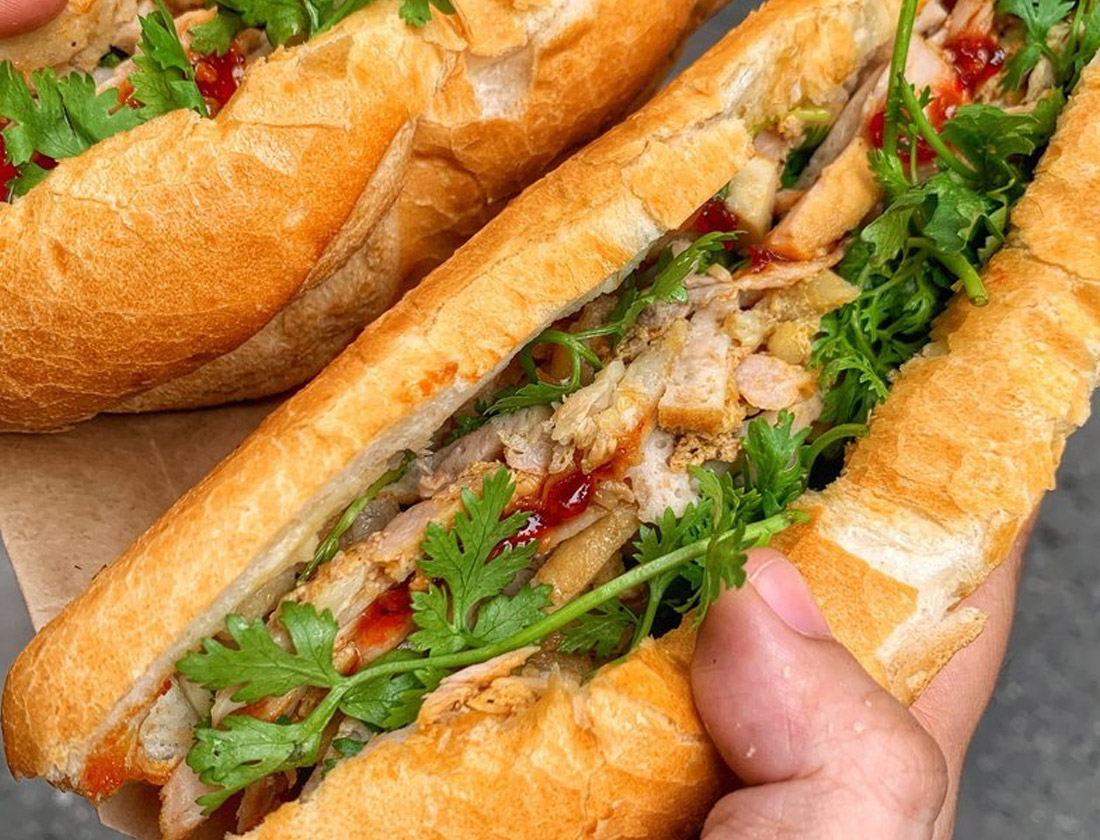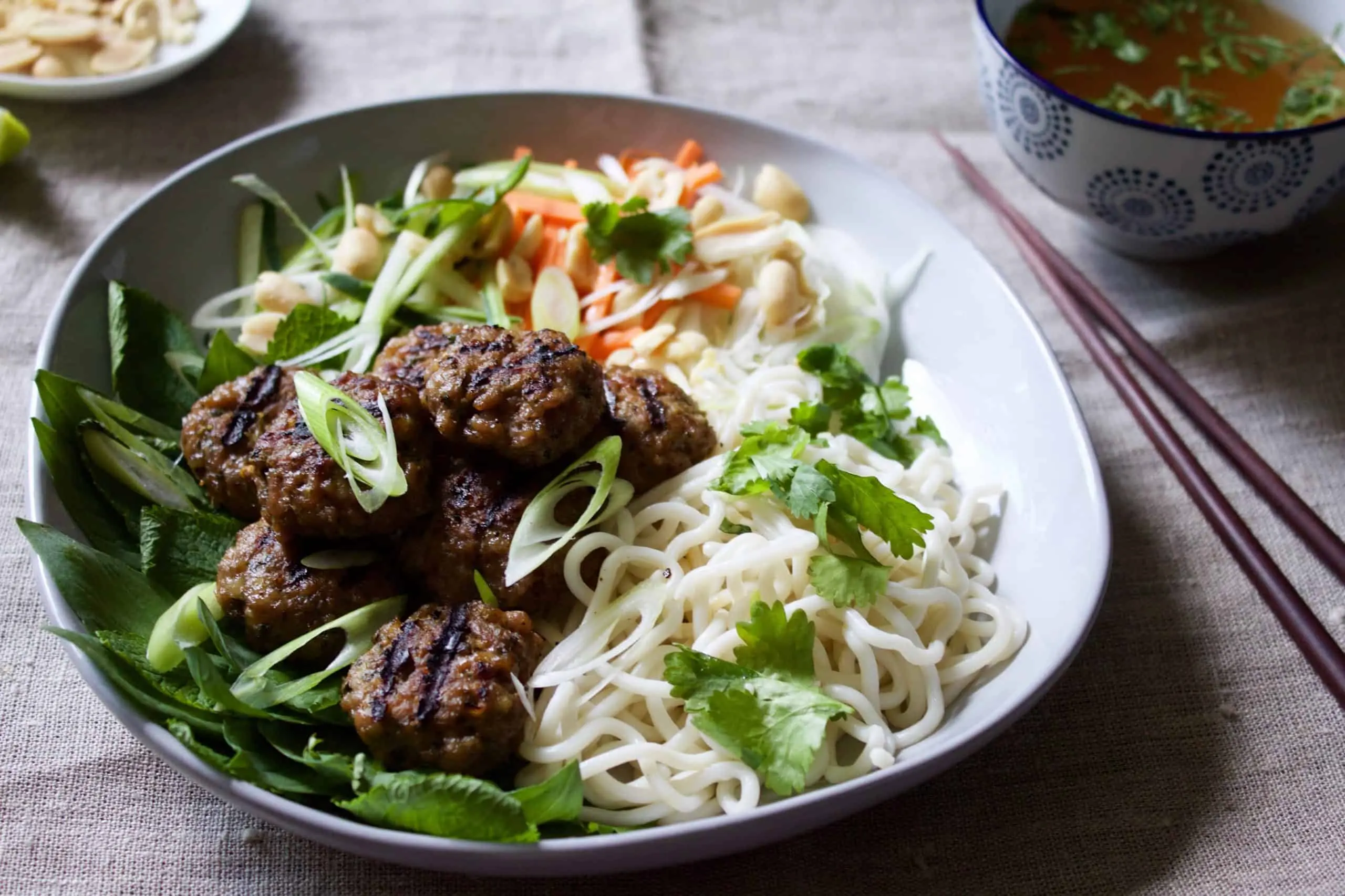
Best Vietnamese Street Food You Must Try
The motorbike screeched to a halt just inches from my feet as I stood mesmerized by the sight before me. Steam billowed from a dozen different pots while the vendor, perched on a plastic stool barely big enough to hold her, ladled aromatic broth into bowl after bowl. This wasn't some fancy restaurant – this was a sidewalk in Hanoi's Old Quarter at 6 AM, and I had just discovered why Vietnam's street food scene is considered one of the world's greatest culinary adventures.
That moment, three years ago, changed everything I thought I knew about Vietnamese cuisine. Sure, I'd had pho in Western restaurants, but nothing prepared me for the complexity, freshness, and sheer variety of authentic Vietnam street food served from tiny stools on bustling sidewalks.
Why Vietnam's Street Food Scene is Unlike Anywhere Else
In Vietnam, street food is everywhere. Early morning markets, roving vendors, and bustling sidewalk stalls all trade in Vietnam's famously mouthwatering cooking. What makes Vietnamese street food extraordinary isn't just the incredible flavors – it's the culture surrounding it.
Vietnamese street food vendors often specialize in just one or two dishes, perfecting their craft over decades. Many recipes are family secrets passed down through generations, and some vendors have been serving the same corner for 30+ years. This dedication to perfection means that humble street-side bowl of noodles often surpasses what you'll find in upscale restaurants.
The price point is equally remarkable. The price of a banh mi typically ranges from 0.82 USD to 1.23 USD. You can eat like royalty for under $10 a day, making Vietnam one of the world's best budget food destinations.
Essential Vietnamese Street Food You Can't Miss
Pho – The Soul of Vietnamese Cuisine

Let's address the elephant in the room first. Yes, everyone knows about pho, but trust me when I say that authentic Vietnamese pho bears little resemblance to what you've likely tried elsewhere.
Real pho starts with a broth that's been simmering for 12-24 hours, creating a depth of flavor that's almost impossible to replicate. The clear, aromatic liquid is ladled over fresh rice noodles and paper-thin slices of beef (pho bo) or chicken (pho ga). What arrives at your plastic table is a bowl of pure comfort.
Where to find it: Hanoi is considered the birthplace of pho, but you'll find exceptional versions throughout Vietnam. Early morning is prime pho time – many vendors sell out by noon.
Pro tip: Add fresh herbs, lime, and chili to taste, but go easy on the hoisin sauce. Purists eat their pho with minimal additions to appreciate the broth's complexity.
Banh Mi – Vietnam's Perfect Sandwich

If pho is Vietnam's soul, then banh mi is its ingenious fusion of cultures. This Vietnamese sandwich represents the country's French colonial history transformed into something uniquely Vietnamese.
Bánh Mì 25 Hà Nội serves a mix of strictly traditional and drastically modernized Vietnamese sandwiches. The foundation is always a crispy French baguette, but the fillings range from classic pork pâté and cold cuts to grilled pork, chicken, or even vegetarian options with tofu and mushrooms.
What elevates banh mi beyond a simple sandwich is the perfect balance of textures and flavors: the crunch of pickled vegetables, the richness of pâté, the freshness of cilantro, and often a spread of mayonnaise or butter.
Cost: Incredibly affordable at $0.80-$1.25 per sandwich Best time: Available all day, but freshest in the morning
Bun Cha – Hanoi's Hidden Gem

Bun cha is a prominent specialty of Hanoi cuisine which any tourist should enjoy once when visiting the capital of the country. This dish perfectly captures the Vietnamese approach to balanced eating.
Bun cha consists of grilled pork patties and pork belly served over a charcoal brazier, accompanied by a bowl of sweet and sour dipping sauce, fresh herbs, pickled vegetables, and rice vermicelli noodles. You construct each bite yourself, dipping the noodles and herbs into the sauce and adding pieces of the smoky grilled pork.
The dish gained international fame when Anthony Bourdain and Barack Obama shared a meal of bun cha in Hanoi, but it's been a local favorite for generations.
Where to find it: Primarily in Hanoi, where it's considered a local specialty Best districts: Hanoi's Old Quarter has numerous excellent bun cha vendors
Regional Specialties You'll Only Find in Specific Areas
Central Vietnam's Mi Quang
This light and springy noodle dish from the Quang Nam province in Central Vietnam is street food. The vibrantly yellow noodles owe their rich colour to turmeric, creating one of Vietnam's most visually striking dishes.
Mi Quang defies easy categorization – it's part soup, part salad, served with just enough broth to moisten the thick, chewy noodles. Topped with shrimp, pork, quail eggs, and peanuts, it's a celebration of textures and flavors unique to central Vietnam.
Hoi An's Cao Lau
Cao lau is a testament to Hoi An's history as a trading port, with influences from Chinese, Japanese, and local Vietnamese cuisines all evident in the dish. This unique noodle dish can only be authentically made in Hoi An, as tradition dictates that the water used must come from the Ba Le Well, and the noodles are made with lye water from a specific plant ash.
The result is unlike any other Vietnamese noodle dish – thick, chewy noodles topped with slices of pork, fresh herbs, and crispy rice crackers, served with just a small amount of dark, flavorful broth.
Southern Vietnam's Banh Xeo
Banh xeo, which translates to "sizzling" pancake, is southern Vietnam's answer to the perfect shareable street food. These massive yellow crepes are made with coconut milk and turmeric, creating a crispy exterior that encases bean sprouts, pork, and shrimp.
The fun lies in eating banh xeo: you tear off pieces of the pancake, wrap them in lettuce leaves with fresh herbs, and dip the entire package in a sweet and sour dipping sauce. It's messy, interactive, and absolutely delicious.
Street Food Etiquette and Cultural Tips
Embracing the Plastic Stool Experience
Authentic Vietnamese street food is served on tiny plastic stools around equally tiny tables. Don't let the humble setting fool you – some of Vietnam's best food comes from these sidewalk operations. Embrace the experience: sit low, eat with your hands when appropriate, and enjoy the theater of street life happening around you.
Navigating Language Barriers
Most street food vendors speak little to no English, but this shouldn't deter you. Point at what looks good, hold up fingers to indicate quantity, and smile. Vietnamese people are incredibly friendly and patient with foreigners trying to navigate their food scene.
Essential phrases:
"Một tô, xin lỗi" (One bowl, please)
"Bao nhiêu tiền?" (How much?)
"Ngon quá!" (Delicious!)
Safety and Hygiene Considerations
Choose stalls with high turnover – if locals are eating there and food is being prepared fresh, you're likely in good hands. Look for places that keep ingredients properly covered and have clean cooking surfaces. Trust your instincts, but don't let excessive caution prevent you from experiencing this incredible food culture.
Best Cities and Areas for Street Food Adventures
Hanoi – The Traditional Heart
Hanoi offers the most traditional Vietnamese street food experience. The Old Quarter is a maze of narrow streets lined with food stalls, each specializing in specific dishes. Early morning is magical here, with vendors setting up for the day while locals grab breakfast on their way to work.
Must-visit areas:
Old Quarter (especially around Hang Buom and Ma May streets)
Dong Xuan Market area
West Lake district for upscale street food
Ho Chi Minh City (Saigon) – The Dynamic South
Ho Chi Minh City: Ben Thanh Market and the surrounding streets offer a plethora of street food options. District 1 is particularly popular for its food stalls. The southern approach to Vietnamese cuisine tends to be sweeter and more diverse, incorporating more vegetables and herbs.
A saigon food tour through District 1 will introduce you to southern specialties like banh xeo, hu tieu (Southern-style noodle soup), and com tam (broken rice dishes).
Hoi An – The Culinary UNESCO Site
Hoi An: The central market is a great place to try local specialties like cao lau and banh xeo. In the evenings, head to the riverside for a magical dining experience. This UNESCO World Heritage site has protected many of its traditional recipes, making it a living museum of central Vietnamese cuisine.
Food Tour vs. Independent Exploration
Joining a Hanoi Food Tour or Saigon Food Tour
Food tours offer several advantages for first-time visitors:
Expert guides who speak the language
Access to vendors you might not find on your own
Cultural context and history behind each dish
Safety in numbers for nervous eaters
However, the best Vietnamese street food experiences often happen when you venture out on your own, following your nose and joining locals at their favorite spots.
Independent Food Adventures
Strike out on your own once you've gained confidence. Some of my most memorable meals in Vietnam happened when I simply followed groups of Vietnamese office workers during lunch breaks or asked locals for recommendations.
Tips for solo food exploration:
Download translation apps
Carry small bills (Vietnamese dong)
Have your hotel's address written in Vietnamese
Start with familiar dishes and gradually try new things
Vegetarian and Dietary Considerations
From vegetarian versions of traditional pho and spring rolls to unique tofu-based creations, there are plenty of vegetarian street food delights to discover and enjoy in Vietnam.
Vietnamese Buddhism has created a rich tradition of vegetarian cuisine. Look for "chay" signs, which indicate vegetarian food. Many vendors offer tofu versions of popular dishes, and Vietnamese vegetarian cuisine is creative and flavorful, not just an afterthought.
Seasonal Considerations and Best Times to Eat
Vietnamese street food culture follows natural rhythms. Many vendors specialize in specific meal times:
Early morning (6-9 AM): Pho, banh mi, sticky rice Late morning (10 AM-12 PM): Bun cha, noodle dishes Afternoon (2-5 PM): Snacks, desserts, coffee Evening (6-9 PM): Grilled dishes, dinner specialties
The best time for street food tours hanoi style is early morning when the city comes alive and vendors are preparing their freshest ingredients.
Beyond the Famous Dishes
Bun Bo Hue – The Spicy Alternative to Pho
This central Vietnamese soup packs serious heat and complex flavors. The broth is made with lemongrass and chili oil, creating a red-tinted soup that's more robust than pho.
Nom – Vietnamese Salads
These aren't your typical salads. Vietnamese nom are complex dishes mixing fresh vegetables, herbs, proteins, and flavorful dressings. Green papaya salad (nom du du) is the most famous, but try lotus root salad or banana flower salad for unique textures and flavors.
Che – Vietnamese Desserts
Vietnamese desserts deserve their own exploration. These sweet soups and puddings incorporate tropical fruits, beans, coconut milk, and tapioca pearls in countless combinations.
Making the Most of Your Vietnamese Street Food Journey
The key to experiencing Vietnamese street food culture is approaching it with an open mind and empty stomach. Don't try to eat everything in one day – pace yourself and savor the experience.
Locals are a great source of information when it comes to finding good places to eat. Strike up conversations (even with limited language skills), ask for recommendations, and follow where Vietnamese people eat.
Vietnamese street food isn't just about the food – it's about community, tradition, and the daily rhythms of life. When you're sitting on that tiny plastic stool, slurping noodles while motorbikes zoom past and vendors call out their wares, you're participating in a cultural experience that's remained largely unchanged for generations.
Whether you join a street food tour hanoi style or venture out on your own saigon food tour, remember that the best Vietnamese street food experiences happen when you embrace the chaos, trust the process, and let your taste buds guide the adventure.
Start with the familiar dishes like pho and banh mi, but don't stop there. Vietnam's street food landscape is vast and varied, with regional specialties and family recipes waiting to be discovered. Each bowl tells a story, each bite connects you to centuries of culinary tradition.
So grab those chopsticks, find a plastic stool, and prepare for one of the world's great food adventures. Your taste buds will thank you, and you'll understand why Vietnamese street food has captured the hearts and stomachs of travelers worldwide.
Ready to experience Vietnam's incredible street food scene for yourself? Start planning your culinary adventure and prepare to eat your way through one of Asia's greatest food destinations!
Comments
No comments yet. Be the first to comment!



